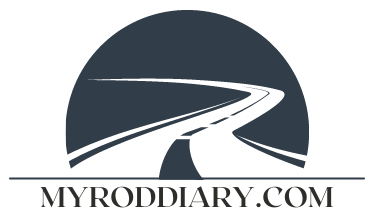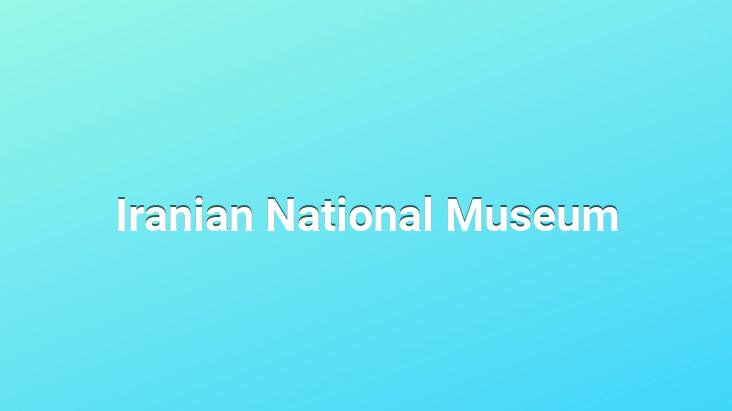Throughout history, there are no other two nations that have managed to be so close to each other and yet be so far away at the same time.. Iran and Turkey are quite far from each other in the eyes of the peoples despite being neighbors and culturally similar.
We are in the light of the same urban legends as the urban legends created by the Westerners about Turkey. We try to interpret Iran without knowing, seeing or going.. When this is the case, we pontificate without going to our neighbor’s house. exists. In the museums, most of which have survived from the 1930s, there are the Medes, Achaemenid Empire, Seleucid Empire, Parthian Empire, Sassanid Empire and Ancient Persian artifacts, whose influences were seen on Iran. I’m on my way to the National Museum of Iran to see the traces of deep-rooted Persian civilization.
Folding the Tehran map I got from the hotel according to my location, I’m on the road with my bag on my back and my pet bottle of water next to my bag.. My wallet, which I place in the most inaccessible part of the bag, creates the feeling of being safe from possible theft or attack.. I think people become incredibly paranoid when they are far from their own city or country.. The National Museum, which I could only notice by asking the soldier resting in a hut after passing by it two or three times, is hidden behind the small park right in front of it with its original architecture.. A small number of tourists who come to Tehran do not miss the museum, which cannot be seen because of the trees while coming from the main street.. According to the statistics of 2006, approximately 1 million 800 thousand foreign tourists visited Iran, while more than 4 million Iranians traveled to other countries, especially Turkey, as tourists.
The number of Turkish citizens visiting the country for tourism purposes is quite low. While staying, Turks mostly go to Iran for business, congress or international organization (sports, competition, etc.).. The National Museum of Iran, whose entrance fee is 150 thousand Iranian Rials, is open every day between 9.00-18.00 except Mondays.
The information desk located in the middle of two separate buildings directs me to the left.. I’m paying the entrance fee of the museum by mixing the Iranian coins with lots of zeros, which I just got used to.. The museum attendant wants me to leave my backpack in the escrow across the street.. I leave my bag in exchange for a Persian metal number.
As soon as I step inside the museum, whose entrance resembles a classical public institution, two museum attendants, chatting among themselves, pause their conversation.. It makes a sign that you can pass it with your hands after you skillfully tore the ticket in my hand.
Since I have not done a very detailed preliminary research, I am trying to walk around in accordance with the order and understand the English texts as much as I can, even though I have no knowledge of what is in the museum.. After taking a souvenir photo in front of the relief Iran map located at the beginning of the exhibition hall, I leave myself in the corridor.
The National Museum of Iran is among the richest museums of the country and the region.. The building, designed by the French architect André Godard, is today considered a work of art on its own, while the dark red and black brick facade of the museum building is likened to the Ardeshir palace in Firuz Abad in Fars province.. Since its arch-shaped pediment resembles the Sassanids and their huge monument, the Kasra Arch, those who visit the museum take a long look at the building from the outside before the works.
More than 10 thousand pieces are on display
The artifacts in the Antique Section, which date to the emergence of Persian reigns, begin with the history of the Medes and Achaemenids.. However, the richest works of the museum are in the prehistoric section.. Artifacts such as clay, stone, bronze. While it dates back to 7 thousand years, nearly 10 thousand pieces are waiting for visitors. His works also reveal Iran’s deep-rooted past.
A copy of the Code of Hammurabi Inscription, the original of which is exhibited in the Louvre Museum, is also exhibited in the National Museum of Iran.. The most magnificent works in the historical section are considered to be the pieces of the Darius Palace, which were brought from the excavations from the Achaemenid dynasty, which was founded by Cyrus II in 556 BC, which the Western world called Persopolis and the Iranians called Pasargad.. There are two meters high statue of Darius, tablets, terracotta or stone works.. In addition to the Achaemenid Empire that existed in Iran between 648-330 BC, the Seleucid Empire (BC. 330-150), Parthian Empire (BC. 250-226), Sassanid Empire (ca.. 226 – AD. 650) while his works meet the visitors in the museum; The results of the archaeological studies carried out in the city of Zanjan in the northwest of Iran can also be seen in the section of the museum with the same name.. Again in the same hall, there is a 50,000-piece seal and coin collection.
Islamic Period Museum
In 1997, it was transferred to an independent section. In the second part of the converted museum, mostly Qur’an manuscripts, miniatures and carpets are placed in a periodical classification.. While stepping into the museum, which includes two large exhibition halls, the photos of Ayatollah Khomeini, who carried out the 1979 Iranian Revolution, and Ali Khamenei, who took office after him and is still the country’s religious leader, welcome the visitors. As I leave the garden of the National Museum of Iran, which I visited for more than an hour, I do not neglect to examine the architecture of the building…
Falafel time
I did not eat anything in the first spot I found after breakfast. I think I will fill my stomach. While browsing the buffet located next to the bus stops, among the greasy and visually unpleasant food options, I get stuck on a meatball-like food that everyone is interested in.
I tell what I want with body language and sit and wait.. Falafel, an Arab dish, is among the dishes most introduced to the world by Arabs and Iranians.. While the Western world thinks that falafel is mostly Turkish, this misconception stems from the fact that they know Turks as an element of Arab or similar culture.. Fried, similar to ours, with the herbs in it, is served in bread with sauce and salad.. After I fill my stomach with falafel to which I added pickles, ground pepper, ketchup and mayonnaise, this time my walk begins on a street I have never passed.

